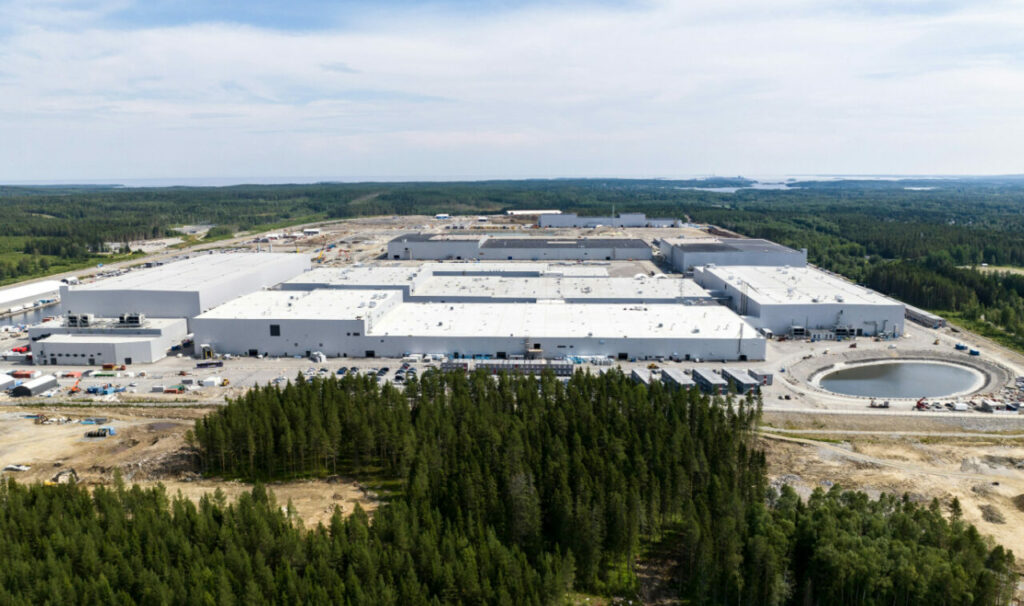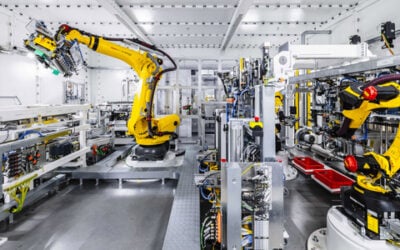
The new Batteries Regulation will be a driver of change in the European Union how the energy storage system industry thinks about procurement and managing batteries at the end of life.
That’s the view of Kevin Shang, senior energy storage analyst at Wood Mackenzie, who spoke to Energy-Storage.news last month at the Energy Storage Summit EU, hosted in London by our publisher Solar Media.
Enjoy 12 months of exclusive analysis
- Regular insight and analysis of the industry’s biggest developments
- In-depth interviews with the industry’s leading figures
- Annual digital subscription to the PV Tech Power journal
- Discounts on Solar Media’s portfolio of events, in-person and virtual
Interviewed after a panel discussion on the EU Battery Passport, a key part of the new legislation adopted by EU Member States after a vote last summer, Shang said that the Batteries Regulation is going to have a major impact on the European supply chain.
The regulation represents the first major update to EU directives on areas including battery management, safety and sustainability since the early 2000s.
Its various requirements, such as carbon footprint labelling, incrementally increased use of recycled materials and transparency on where materials have been sourced, come into effect over a number of years, becoming more stringent over time.
The Battery Passport will be a digitally tracked way of making data on those and other metrics available, increasing transparency and accountability, as well as ensuring that devices placed into the EU market are fit for purpose.
One thing that was emphasised in the panel discussion that morning at the conference was that complying with the regulation will be mandatory for anyone placing batteries into the market, which Shang said is of particular interest to the energy storage industry.
When it comes to electric vehicles (EVs), Shang said, “People talk about recycling and how we manage the end of life of batteries,” but that it doesn’t happen anywhere near as much on the energy storage system (ESS) side.
“Now, because of this new Battery Regulation, basically, [although batteries are imported largely from China], local system integrators [in Europe] have to be responsible for how to deal with these batteries in the energy storage system when they reach the end of life,” Shang said.
This is due to the legislation insisting that it is the ‘economic operator’ of the battery that places the battery in the EU Common Market, not the manufacturer that takes ultimate responsibility.
It also applies to all components. Regardless of whether system integrators are importing battery cells, battery modules, or DC containers, because they are shipping them from China to Europe, “they will be the entity to be in charge of this management, or to deal with the end of life batteries”, Shang said.
“What I’ve heard is that almost all the leading companies have to examine their supply chain. The new regulation has these clear milestones: at what year do you have to achieve these carbon emission targets, what year do you have to achieve this [level] of the localised content, and what do you have to achieve the requirements on the materials’ circularity.”
Impact of the Inflation Reduction Act
One big talking point across the Atlantic divide is the ripple effect that the US Inflation Reduction Act (IRA) is having on Europe’s battery manufacturing ambitions.
The view from the Giga Europe conference hosted last week in Sweden by Benchmark Mineral Intelligence was that the IRA’s clarity of purpose and implementation, as well as generous incentives for domestic production of everything from raw materials to finished products, is making investors’ view the US as a safer bet on where to put their money.
“The US Inflation Reduction Act did have an impact on this European industry, or on the European battery manufacturing industry,” Shang said, but “many of these companies haven’t given up on the European market entirely, they just prioritise their resources in the US market, because the incentives for investment in the US market are so attractive”.
Separately to that, Shang noted that gigafactory plans in Europe are largely driven by demand from the EV sector. The portion of battery products going towards battery energy storage system (BESS) applications is growing, but is still relatively small.
Investment and offtake agreements that make gigafactory plans a reality have been a little dampened by slower growth in EV sales than many had expected.
Furthermore, “it takes time” to establish battery manufacturing capabilities, on which companies in Asia have a major head start. So the advent of mass production of batteries in Europe was always going to take time, the analyst said.
“For homegrown companies [in Europe], it takes time for them to achieve the cost structure they hoped for, [and] to achieve high volumes of manufacturing in a very high-quality and cost-competitive way.”
Energy storage supply chain ‘becoming more independent’ of EVs
However, European system integrators should be able to procure the volumes of batteries they need to enable their downstream BESS deployments, and the IRA is perhaps ironically also a factor there.
Being that the higher levels of incentives under the IRA will be unlocked through domestic content rules, the European outlook is “more friendly” to short-term procurement strategies. That’s a key difference, Shang said, because European Union-based buyers will still have more freedom to source their products from outside their domestic market.
“It really depends in the long-term on this new Batteries Regulation. It determines whether your batteries can meet, for example, the sustainability requirements. In the US, you have to make the batteries in the US or in some other specific countries,” Shang said.
“Which means that for the Chinese battery companies, they still have much more opportunities in Europe than the US.”
Wood Mackenzie has also “thought a lot” about overcapacity of battery cells made in China, and also about the growing trend for battery manufacturing dedicated to the ESS market.
“A couple of years ago… battery manufacturers prioritised their supply towards EV customers. If they had more, they gave them to the storage industry.”
However as battery makers see the stationary storage industry grow, the supply chain for it has become more independent. Manufacturers may previously have “separated a few production lines dedicated to ESS customers,” Kevin Shang said.
“Now, we have seen a growing trend for dedicated plants for ESS customers. Coupled with these overcapacity issues, I think it’s quite likely we would have enough supply for the ESS demand [in Europe].”






